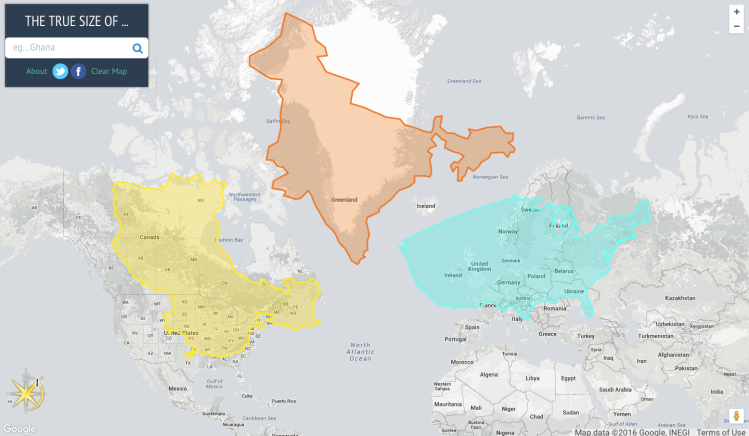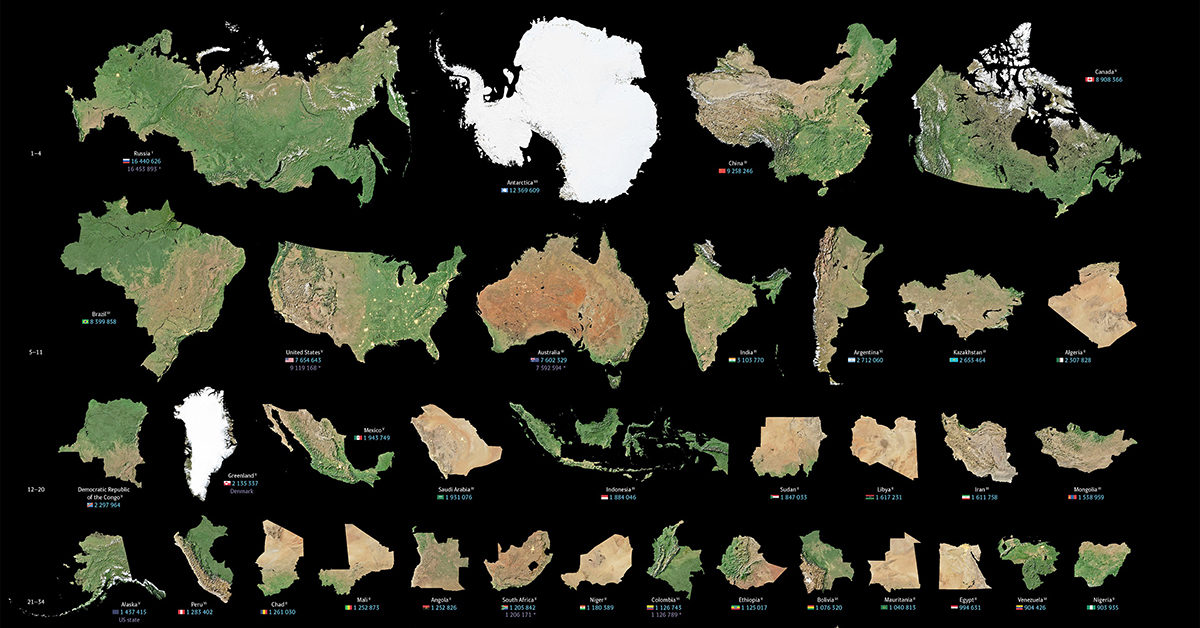The True Size Of Countries: Beyond What Maps Show
Have you ever looked at a world map and felt something was a little off? Perhaps Greenland seemed impossibly large, or Africa surprisingly small, despite its vastness. You’re not alone. Our perception of the world’s countries, particularly their physical size, has long been skewed by the very maps we use. The most common world map, the Mercator projection, was designed for navigation, not for accurately representing landmasses. This projection stretches out areas further from the equator, making places like Canada, Russia, and Greenland appear much larger than they truly are relative to countries near the equator, such as those in Africa or South America.
Fortunately, interactive maps now exist that truly show the relative size of countries, offering a much-needed reality check. But is the "true size" of a country merely about its land area? Or are there other, perhaps more significant, dimensions to consider when we talk about how well a country is doing, or its overall standing in the world?
The Deceptive Map: Why Countries Look Different
The Mercator projection, while revolutionary for sailors, distorts land areas significantly. For instance, Greenland, which appears comparable in size to Africa on many maps, is in reality about 14 times smaller than the African continent. Brazil often looks similar in size to Canada, but Canada is actually larger. These distortions have a subtle but profound impact on our global perspective, influencing how we perceive the importance or scale of different nations.
The advent of digital tools and interactive maps has allowed us to finally visualize the world with more accurate proportions. These tools provide a clear demonstration of the true relative size of countries, helping us correct long-held geographical misconceptions. It’s a fascinating exercise to drag and drop countries on such maps to see how they shrink or expand as they move closer to or further from the equator, revealing their actual scale.
Beyond Landmass: What Truly Defines a Country's "Size"?
While geographical area is one measure, a country's "true size" in the global arena encompasses much more. It's a complex interplay of economic strength, human development, geopolitical influence, and its ability to navigate global challenges. When we ask, "But is there a better way to track how well a country is doing?", we open the door to a multi-dimensional understanding of national power and well-being.
Economic Power and Influence
One of the most immediate indicators of a country's "size" beyond its borders is its economic might. This is often measured by its Gross Domestic Product (GDP), trade volumes, and financial stability. The global economic system under which most countries have operated for the last 80 years is currently being reset, ushering the world into a new era where existing rules are challenged. This economic reshaping highlights how dynamic a country's influence can be.
Consider the impact of trade: when a large trade deficit exists between nations, it is frequently accompanied by assertions that excess imports are destroying jobs in the local manufacturing sector. This illustrates how economic interactions, far from being abstract numbers, directly affect the lives of citizens and the political landscape. Furthermore, Joe Myers once posed an interesting question: have you ever wondered how the world’s companies stack up compared to countries? A new ranking often looks at government revenue and compares it to some of the world's largest corporations, showing that economic power isn't solely held by nations, but also by multinational entities, adding another layer to the concept of "size" and influence.
Human Development and Well-being
A truly "great" or "large" country should also be measured by the well-being of its people. This includes factors like education, healthcare, life expectancy, and social equity. Indices like the Human Development Index (HDI) attempt to capture this holistic view. Gender parity is another critical measure: the global gender gap index annually benchmarks the current state and evolution of gender parity across four key dimensions: economic participation and opportunity, educational attainment, health and survival, and political empowerment. A country that excels in these areas, ensuring a high quality of life and equal opportunities for its citizens, demonstrates a profound kind of "size" and strength.
Geopolitical Clout and Global Challenges
A country's influence on the world stage, its ability to form alliances, and its capacity to address pressing global issues also define its "true size." Developing countries, for instance, often face disadvantages in global cooperation due to limited resources and historical imbalances. However, by embracing strategies such as alliances and leveraging technology, they can amplify their voices and impact.
The world is constantly grappling with complex challenges that transcend borders. For example, top nature and climate news consistently highlights issues like the world being set for new heat records in the next 5 years, and initiatives like the African Development Bank launching carbon credits markets. Similarly, the UN's latest World Drug Report highlights the prevailing trends in global drug cultivation, trafficking, and use, underscoring the need for international cooperation. A country's ability to contribute meaningfully to solutions for these global problems, rather than just its physical footprint, is a testament to its real influence and stature.
The Evolving Definition of "True Size"
The concept of a country's "true size" is dynamic and multifaceted. It's not just about how much land it occupies, but also about the vibrancy of its economy, the health and happiness of its population, its technological advancements, and its diplomatic prowess. In an increasingly interconnected world, a country's perceived size and influence are constantly being reshaped by its actions on the global stage, its innovation, and its commitment to human progress.
Understanding this broader definition helps us move beyond simplistic geographical representations to appreciate the complex realities of global power, development, and responsibility. It encourages a more nuanced and informed perspective on the world around us.
Article Summary
This article explores the concept of a country's "true size" beyond the often-misleading Mercator map projection. While interactive maps now accurately depict land area, the article argues that a nation's true standing is multi-dimensional. It delves into economic indicators like GDP and trade deficits, highlighting how the global economic system is being reset. Furthermore, it discusses human development metrics, including the global gender gap index, as crucial measures of a country's well-being. Finally, it touches upon geopolitical influence and a nation's role in addressing global challenges such as climate change and drug trafficking, emphasizing that a country's true size is ultimately defined by its comprehensive impact on the world and its people.

The True Size Of, An Interactive Map That Accurately Compares the

Interactive Map Showing The True Size Of Countries Across The World

Map Actual Size Of Countries - Perl Trixie